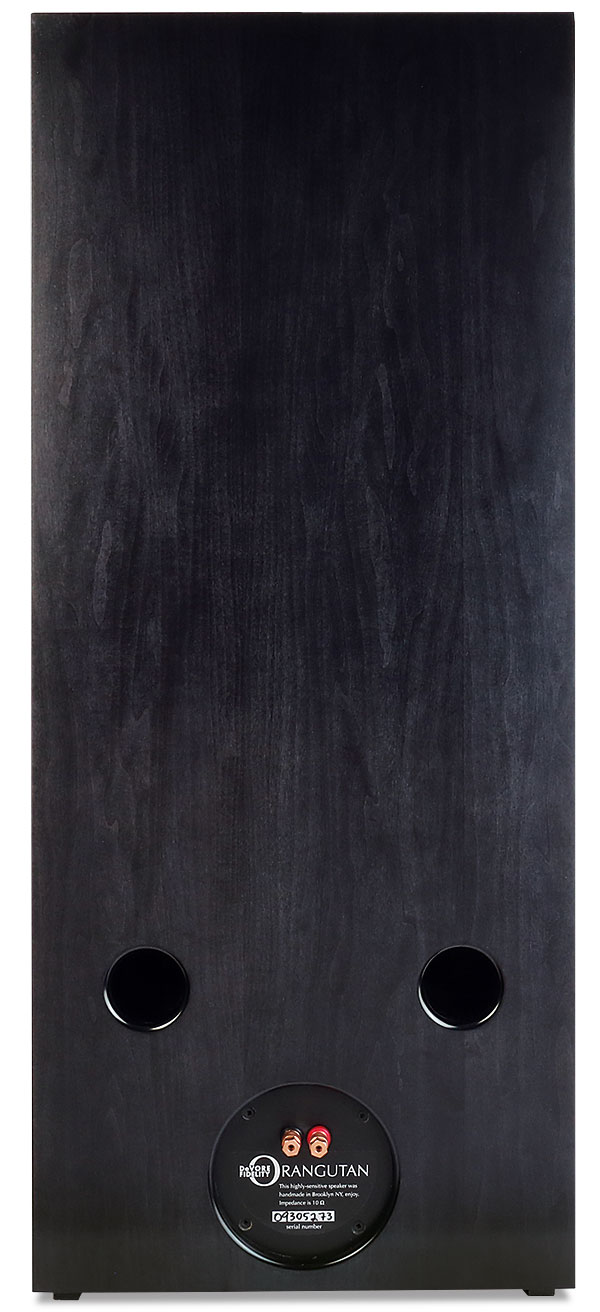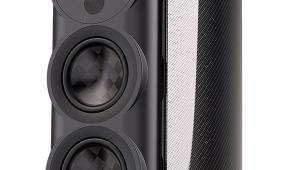DeVore Fidelity O/93 Loudspeaker Page 2
To put this split personality into perspective, it's like handing a Gibson Les Paul guitar to its creator, whose playing was fast and precise, but always super-smooth. Like that combination, the DeVore O/93s, via the Type 91E amp, delivered fluidity which I haven't heard since the Apogee Scintilla ribbon speakers [HFN Sep '85]. It's this flowing sound that rendered the pedal steel on Confederate Railroad's 'Trashy Women' from Greatest Hits [Atlantic 82911-2] – just when you reach the lyric 'heart of gold' – as sinuous and liquid as ever I have heard it.
Scaling New Heights
Grab the axe from Les Paul himself and hand it to Jimmy Page and you'd swear it wasn't the same instrument. That's what happens when the O/93s are fed either raucous music or truckloads of power – or both. The textures and tones segue as if from Jekyll to Hyde, exactly the manner in which the O/93s made the transition when I turned to bigger amps and Mountain's Climbing! [CBS Sony Japan 25AP-1277 LP], just to hear the wail of 'Mississippi Queen' at full bellow. What I did not expect was a sensation of (sonic) time travel.
Conversations with a seasoned listener of longevity similar to mine highlighted a quality I hadn't expected, especially as a number of recent reissues of classic speakers, eg, revived JBLs, haven't quite recaptured that magical sound of yore. Perhaps they're not supposed to mimic their ancestors. The DeVore O/93, however, does reference past values. Maybe it is the character of paper cones which predate Bextrene and polypropylene, or the high sensitivity. Whatever the reason, I was hearing a freshness, a rawness, a lack of pretence – in other words, the sound of music rather than the sound of hi-fi.
Arguably the most perplexing aspect was the extraordinarily huge soundstage, accompanied by a vanishing act I normally associate only with panel-type speakers. The soundstage was vast, yet with an image specificity denied to the classics of which the DeVore O/93s reminded me despite obvious, modern differences. As much as I miss my vintage Acoustic Research 2AXs, they were hard to drive and could sound amorphous. But they were always inviting, and that is the overriding quality of the O/93s, irrespective of amplifiers, source components or material. They suck you in completely, so forget truncated listening sessions.

Scale And Weight
However much the first impression of the O/93s is one of finesse, as if they're begging for some late-1950s Nat 'King' Cole recordings on Capitol, all satiny and warm, they showed me that the move from the Western Electric Type 91E to the surplus wattage of the D'Agostino Momentum could be taken in their stride. By way of comparison, although I used the same recordings heard with the Western Electric/DeVore combination in PM's room, the discovery of the speakers' 'evil twin' nature demanded some additional torture testing.
Back to Mountain. I cranked up the volume and noted that the mass, airiness, scale and weight of Corky Laing's percussion enjoyed the same tactility and presence as that of Kodō's Warabe [Sony SRCL4671], if not the tonal nature because the types of drums differ wildly. (And, no, I am not attributing this consistency to both albums being Sony Japan releases.) Ported the O/93s may be, but there was no woofly sound down below. The bass simply covers the floor and creates an impeccable foundation.
Way Out West
In direct contrast to the slick pedal steel of Confederate Railroad, the scream of Leslie West's guitar and the rasp of his vocals through the O/93s took me back to the year Mountain's LP was released – 1970. The sound was as welcoming and involving as hi-fi playback used to be, before we got wrapped up in the tweaky minutiae that distracted us from the music.
What really overwhelmed me, however, was an open-reel tape of big band lushness. The BB King track 'Don't Get Around Much Anymore' was included on HFN's All Time Greats cover CD in 1994; now I can play it closer to its source, on Maxwell Davis' Compositions Of Duke Ellington & Others [Crown ST110]. It took but seconds to seduce me, especially King's rich vocals. The O/93s filled the room, wrapping the sound around the system such that it vanished. All that was left was the music – and me wishing I had £9998.
Hi-Fi News Verdict
I've heard it said, and concur, that DeVore's O/93 sounds like 'a state-of-the-art 1968 speaker, but with 21st century transparency and soundstage recreation'. This compact floorstander made me recall the bliss of 1970s AR-3As and large Advents, yet with dynamics, detail and scale unimaginable back then. Yet the O/93 isn't about nostalgia. Rather, it merits the description 'timeless'. I so badly want a pair...

















































